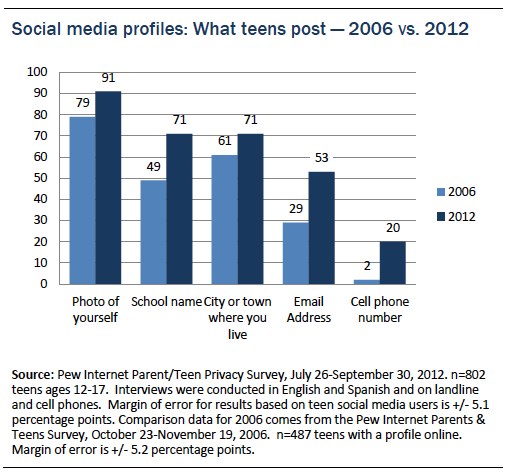Are you curious about what social media influencers are really doing behind the scenes? Your teen might be following them religiously, but there’s a lot they aren’t telling you.
In a world where likes and follows can mean everything, influencers have mastered the art of appearing perfect. But is that picture as flawless as it seems? You deserve to know the truth, especially when it comes to who your teen looks up to.
This blog post will peel back the glossy layer and reveal the reality that influencers often keep hidden. From sponsored posts to the pressure of maintaining a perfect image, there are secrets that could change the way you see these online celebrities. Stick around to discover what influencers really don’t want your teen to know. Understanding these truths could empower you to guide your teen more effectively in navigating the digital landscape. Ready to dive in? Let’s uncover the truth together.
Rise Of Social Media Influencers
Social media influencers often present idealized versions of their lives. Teens may not realize the hidden pressures and curated content behind the scenes. Understanding this can help them navigate influencer culture more wisely.
The rise of social media influencers has transformed the digital landscape dramatically. Just a decade ago, the concept of someone earning a living by sharing their daily life online was unthinkable. Today, influencers are everywhere, shaping trends, dictating fashion, and even influencing political opinions. But while their lives appear glamorous, there’s a side to this world that your teen may not see.What Drives Their Popularity?
The power of influencers lies in their relatability. Unlike traditional celebrities, they seem like ordinary people. They share snippets of their daily routines, personal stories, and struggles. This creates a sense of intimacy and authenticity. However, this authenticity can be a facade. Many influencers carefully curate their content to project an idealized version of their lives. This can lead to unrealistic expectations and pressure on teens to emulate them.The Business Behind The Glamour
Influencers often monetize their platforms through sponsorships and partnerships. Brands pay them to promote products because they have direct access to your teen’s attention. This is not always disclosed transparently, blurring the lines between genuine endorsement and paid advertising. Your teen may not realize the extent of this commercial aspect. It’s crucial to discuss the importance of discerning genuine recommendations from paid promotions.The Pressure To Perform
Becoming an influencer is not all fun and games. There’s constant pressure to create engaging content, maintain a perfect image, and gain followers. This can lead to stress and burnout. Encourage your teen to understand that being an influencer is like running a business. It’s demanding and often isolating, with success measured by likes and follows rather than personal fulfillment.Influence On Self-esteem
Social media can significantly impact self-esteem, especially in teens. The curated images of influencers can set unrealistic standards of beauty and success. This can lead your teen to compare themselves unfavorably, affecting their mental health. Ask your teen how they feel after scrolling through influencer feeds. Encourage open conversations about self-worth and the importance of valuing their unique qualities.Encouraging Critical Thinking
Help your teen develop critical thinking skills when engaging with social media. Encourage them to question the authenticity of content and the motives behind it. Understanding the influencer industry can empower them to make informed decisions about who they follow and what content they consume. What insights can your teen gather from the influencers they admire? Encourage them to reflect on the positive aspects and lessons they can apply to their own lives. The world of social media influencers is complex, but with thoughtful guidance, your teen can navigate it wisely.
Credit: summer.harvard.edu
Behind The Glamour
Social media influencers often hide the hard work and stress behind their glamorous posts. Teens may not see the endless hours spent on perfect photos and videos. Understanding this can help them see beyond the glittery facade.
Behind the dazzling photos and perfect lives, social media influencers present a different world. Teens often admire their glamorous lifestyles, but there’s more to the story. Many influencers don’t share the struggles they face behind the scenes. These hidden truths can have significant impacts on young audiences.Curated Content
Influencers often show carefully selected images and moments. Only the best parts of their day make it online. Teens may not realize everything is curated. The perfect photo might take hours to stage. Followers see only a fraction of their real life. This can create unrealistic standards for teens. They might feel pressured to match these idealized images.The Pressure To Perform
Influencers constantly feel the need to stay relevant. They must keep their audience engaged. This pressure can be overwhelming. They have to post new content regularly. The goal is to gain likes, comments, and shares. This can lead to burnout. Teens might not see this side of influencer life. Instead, they only see the glamorous public face.Mental Health Impact
The influencer lifestyle can take a toll on mental health. The constant need for approval can lead to anxiety. Many influencers struggle with self-esteem issues. They often face harsh criticism online. This can affect their well-being. Teens may not be aware of these mental health challenges. They might believe influencers have perfect lives without problems.Influencer Marketing Tactics
Social media influencers often present an idealized version of life, which can mislead teens about reality. They focus on appearances and curated content, hiding the challenges behind their glamorous posts. Teens might not realize the impact of these polished images on their self-esteem and expectations.
Understanding the world of social media influencers can feel like navigating a maze. Your teen might follow influencers for their style, ideas, or just their personality. But there’s a side to influencer marketing that isn’t always visible. Behind the likes and shares, influencers use specific tactics to engage their audience and promote products. Let’s dive into some of these tactics and what they might not want your teen to know.Sponsored Content
Many influencers are paid to promote products or services. This is known as sponsored content. Have you ever noticed a post that seems just a bit too perfect? That’s likely because it’s paid advertising. Influencers create content that seamlessly blends with their usual posts, making it hard for followers to distinguish between genuine recommendations and paid promotions. These posts often carry hashtags like ad or sponsored. However, not all influencers are transparent. Encourage your teen to look for these signs and question the authenticity of posts. Understanding this helps them see beyond the glossy photos and catchy captions.Affiliate Links
Affiliate links are another popular tactic. When influencers share a product link, they might earn a commission if you make a purchase through it. This means they’re financially motivated to promote those products. It’s crucial to inform your teen that not all recommendations are based purely on quality or value. Sometimes, it’s about the paycheck. Encourage them to research products independently before making purchases. This way, they learn to make informed decisions rather than relying solely on influencer endorsements.Brand Partnerships
Influencers often partner with brands for long-term collaborations. These partnerships can range from exclusive product launches to being the face of a campaign. Brands choose influencers who align with their values and can authentically reach their target audience. While these partnerships can result in creative content, they also mean influencers have to maintain a certain image. Your teen should know that influencers might not always speak freely about their true opinions. Encourage them to think critically about the content they consume. Are the influencers being real, or are they just fulfilling their contractual obligations? These influencer marketing tactics can be eye-opening. They highlight the commercial side of social media that often goes unnoticed. As you discuss these with your teen, consider the impact of these tactics on their perception of social media. What do they really value in the influencers they follow?Authenticity Vs. Perception
Social media influencers often portray perfect lives, masking true struggles. Teens may not realize the difference between authenticity and perception. Understanding this hidden truth can help navigate social media’s impact.
In the world of social media, what you see isn’t always what you get. The line between authenticity and perception often blurs, especially when it comes to influencers. Teens look up to these digital stars, but it’s crucial to understand what’s real and what’s just a well-crafted image.The Illusion Of Perfection
Influencers often present a life that seems flawless. Perfect vacations, spotless homes, and impeccable fashion are all part of their curated feeds. But this can create unrealistic standards for teens who idolize them. Consider how many photos an influencer might take to capture a single perfect shot. The reality is that behind each seemingly candid image, there’s a lot of planning and editing. This isn’t necessarily dishonest, but it’s important to remind your teen that what they see is a highlight reel, not everyday life. Ask yourself, would you feel comfortable if your teen believed they needed to live up to these flawless standards? Encourage them to see social media as a source of inspiration, not a blueprint for life.Reality Behind The Scenes
Away from the camera, influencers deal with the same issues as everyone else. They face stress, insecurity, and the pressure to maintain their online persona. This side of their life is often hidden from their audience. Many influencers have started sharing more about their struggles. This shift towards transparency offers a more balanced view of their lives. It shows teens that success and happiness come with challenges and imperfections. Have an open conversation with your teen about what they admire in influencers. Challenge them to consider how they can apply these qualities in a way that respects their own unique journey. By doing this, you empower them to appreciate authenticity over a polished perception.Impact On Teen Audiences
Social media influencers hold significant power over teen audiences. Their content reaches millions. Teens admire their lifestyles, fashion choices, and daily routines. But this influence has a profound impact. It shapes aspirations, body image, and consumer behavior. Understanding these impacts helps parents guide their teens better.
Shaping Teen Aspirations
Influencers often present a picture-perfect life. Teens dream of achieving similar fame. This aspiration can lead them to unrealistic goals. Influencers rarely show struggles and failures. Teens may not see the hard work behind success. They might think success comes easily. This belief can affect their motivation and self-worth.
Body Image Concerns
Many influencers promote idealized body images. Teens see these images daily. They compare themselves to these unrealistic standards. This can cause body dissatisfaction. Influencers often use filters or editing. Teens may not realize this. They may think these bodies are natural. This can lead to negative self-image and low confidence.
Consumer Behavior
Influencers promote products to their followers. Teens are a major target for these promotions. They trust influencer recommendations. This influences their buying decisions. Teens might buy products they do not need. They may believe it leads to happiness or acceptance. This behavior can impact their financial habits.

Credit: www.pewresearch.org
Red Flags To Watch
Social media influencers often hide the real truth behind their posts. Teens should know that not everything is genuine. Many influencers promote products for money, not because they truly like them.
Navigating the world of social media influencers can be a tricky task, especially for teenagers who are still figuring out their identities and values. While influencers can be inspiring, there are certain red flags that you and your teen should be aware of. Recognizing these signs can help protect them from unrealistic expectations and false perceptions.Misleading Endorsements
It’s common for influencers to promote products, but not all endorsements are genuine. Some influencers may not even use the products they recommend. They might just be motivated by the paycheck. Encourage your teen to question the authenticity of endorsements. Ask them to look for influencers who share honest reviews and disclose any partnerships. A simple “ad” or “sponsored” tag isn’t enough to gauge trustworthiness.Paid Followers And Likes
Numbers can be deceiving. Many influencers artificially inflate their follower counts by purchasing followers and likes. This creates a false sense of popularity. Teach your teen to focus on quality over quantity. Genuine influencers have loyal followers who engage with their content meaningfully. If an influencer’s comments are generic or irrelevant, it might be a sign of paid engagement.Fake Engagement
Engagement rates can be manipulated. Fake comments and likes are bought to make influencers appear more popular than they are. This can mislead your teen into thinking that the influencer’s content is more impactful than it truly is. Encourage your teen to read the comments and see if there’s genuine interaction. Does the influencer respond thoughtfully? Are the comments from real accounts? Engaging with authentic influencers can provide a more positive online experience. These red flags are crucial to recognize in a digital age where appearances often overshadow reality. By equipping your teen with the right tools to evaluate influencers, you’re not only protecting them but also guiding them to make informed choices. What other signs do you think are important to watch out for?Positive Contributions Of Influencers
Influencers contribute positively by inspiring creativity and promoting awareness on various topics. Many share personal stories that motivate and educate followers. Their platforms can foster a sense of community and encourage positive social change.
Social media influencers often get a bad rap, but they can also make a positive impact. While some may focus on selling products, many influencers are using their platforms for good. They play key roles in driving social change, building communities, and empowering voices that might otherwise go unheard.Social Awareness Campaigns
Influencers are often at the forefront of social awareness campaigns. They have the power to reach millions and spread important messages quickly. You might have noticed an influencer you follow sharing information about mental health, environmental issues, or social justice. By doing so, they raise awareness and encourage their followers to take action. This can lead to real-world change, as people become more informed and motivated to make a difference.Community Building
One of the strongest aspects of social media is its ability to bring people together. Influencers often create communities around shared interests, values, or causes. These communities can provide support, advice, and a sense of belonging. Imagine finding a group where you feel understood and accepted, all because an influencer decided to create a space for people like you.Empowering Voices
Many influencers use their platforms to amplify voices that might not be heard otherwise. They give a spotlight to marginalized groups, emerging talents, and underrepresented stories. This not only raises awareness but also helps to build a more inclusive and diverse digital space. You might find yourself inspired by stories you would never have encountered otherwise. Have you ever thought about how an influencer might have changed your perspective or introduced you to a new community? It’s worth considering how they can make a difference in your life and the world around you.
Credit: www.amazon.com
Frequently Asked Questions
What Do Influencers Hide From Teens?
Influencers often hide their real lives and struggles. They curate content to appear perfect and aspirational. Financial motives may drive their endorsements. Teens should understand that influencers’ glamorous lives aren’t always genuine. It’s important for teens to critically assess what they see online and recognize the commercial aspects.
Are Social Media Influencers Trustworthy?
Not all influencers are trustworthy. Many promote products for monetary gain, not personal belief. Teens should be cautious and research before trusting endorsements. It’s essential to question the authenticity of influencer content. Understanding the difference between genuine content and paid promotions is crucial for informed decisions.
How Do Influencers Affect Teen Self-esteem?
Influencers can negatively impact teen self-esteem. Teens may compare themselves to curated images and feel inadequate. This can lead to unrealistic expectations and body image issues. It’s important for teens to understand that influencer content is often edited. Encouraging self-acceptance and critical thinking is vital.
Why Do Influencers Avoid Sharing Failures?
Influencers avoid sharing failures to maintain a perfect image. This helps them attract followers and brand deals. Teens should know that everyone faces challenges, even influencers. Understanding this can promote resilience and realistic expectations. Encouraging openness about failures can foster a healthier online environment.
Conclusion
Teens often admire social media influencers. But they should know the truth. Influencers show a perfect life online. Real life is different. Not everything is as it seems. Teens should think critically about what they see. It’s important to question online content.
Parents can help guide this process. Encourage open conversations. Discuss the realities behind the screen. Teach teens to value authenticity. Not everything online is real. Awareness is key. With guidance, teens can navigate social media wisely. They can learn to appreciate genuine content.


